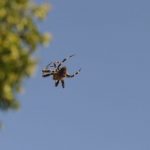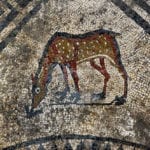 Technology
Technology  Technology
Technology  Humans
Humans 10 Everyday Human Behaviors That Are Actually Survival Instincts
 Animals
Animals 10 Animals That Humiliated and Harmed Historical Leaders
 History
History 10 Most Influential Protests in Modern History
 Creepy
Creepy 10 More Representations of Death from Myth, Legend, and Folktale
 Technology
Technology 10 Scientific Breakthroughs of 2025 That’ll Change Everything
 Our World
Our World 10 Ways Icelandic Culture Makes Other Countries Look Boring
 Misconceptions
Misconceptions 10 Common Misconceptions About the Victorian Era
 Mysteries
Mysteries 10 Strange Unexplained Mysteries of 2025
 Miscellaneous
Miscellaneous 10 of History’s Most Bell-Ringing Finishing Moves
 Technology
Technology Top 10 Everyday Tech Buzzwords That Hide a Darker Past
 Humans
Humans 10 Everyday Human Behaviors That Are Actually Survival Instincts
 Animals
Animals 10 Animals That Humiliated and Harmed Historical Leaders
Who's Behind Listverse?

Jamie Frater
Head Editor
Jamie founded Listverse due to an insatiable desire to share fascinating, obscure, and bizarre facts. He has been a guest speaker on numerous national radio and television stations and is a five time published author.
More About Us History
History 10 Most Influential Protests in Modern History
 Creepy
Creepy 10 More Representations of Death from Myth, Legend, and Folktale
 Technology
Technology 10 Scientific Breakthroughs of 2025 That’ll Change Everything
 Our World
Our World 10 Ways Icelandic Culture Makes Other Countries Look Boring
 Misconceptions
Misconceptions 10 Common Misconceptions About the Victorian Era
 Mysteries
Mysteries 10 Strange Unexplained Mysteries of 2025
 Miscellaneous
Miscellaneous 10 of History’s Most Bell-Ringing Finishing Moves
10 Cases of Humans Connecting with Animals Through Music
For millennia, humans have sought ways to communicate with animals, despite the obvious challenge that animals cannot speak in the same manner we do. Over the centuries, however, humans have discovered that animals not only listen to music but often respond to it in remarkable and unexpected ways. Multiple studies have shown that music can elicit measurable physiological responses in animals, such as changes in their heart rate and brain activity.
For instance, classical music has been found to lower heart rates in dogs, while certain genres, like reggae, increase heart rate variability—a sign of reduced stress. Similar effects have been observed in other species, with music influencing brain activity, enhancing neuroplasticity, and even reducing blood pressure.
In this list, we’ll explore 10 extraordinary cases where humans connected with animals through music. By the end, we may all come to appreciate that all life on Earth is interconnected in ways that we are only beginning to understand. If you have pets at home, this list might inspire you to musically connect with your friendly and furry little family members in ways that you never have before. Let’s dive into these ten amazing cases of humans and animals forming musical bonds.
Related: 10 Amazing Ways Music Affects the World
10 A Herd of Cows Thoroughly Enjoys an Impromptu Human Jazz Jam Session
Thirteen years ago, a very interesting video was posted to YouTube. The video demonstrated that cows definitely have an interest in human-created music. In the video, The New Hot 5, an American-based jazz band, performs for a herd of cows in Autrans, France. The cows stare and concentrate intensely as the band plays Dixieland jazz just a few meters away. Almost all the cows paid very close attention to the music. While the video doesn’t explain why the cows find the music so captivating, their intense focus raises an intriguing question: What is going on in their minds as they listen to the jazz serenade? Will we ever know?
The band began their performance with a lively rendition of “WhentThe Saints Go Marching In.” As the music filled the air, the cows, which had been scattered across the field, slowly approached the musicians. Before long, the entire herd had gathered in a line, standing attentively and appearing to listen with genuine interest. The musicians who specialize in the music of jazz legends like Louis Armstrong and Sidney Bechet likely never anticipated such a unique and engaged audience.
So far, the YouTube video has been viewed more than 26 million times, demonstrating that people really find it fascinating that the cows find live jazz music so interesting. It might make people wonder whether the members of the animal kingdom are much more similar to us than we previously thought.[1]
9 The Coolest Golden Retriever Ever Grooves to a Guitar Serenade
On December 22, 2011, one of the coolest videos ever was uploaded to YouTube. As of 2025, the video has amassed almost 15 million views. In the clip, man’s best friend, a golden retriever named Bailey, playfully bobs his head in rhythm to his owner’s soulful guitar riffs.
The video isn’t a complete surprise. Golden retrievers have a long history of forming deep connections with humans, dating back to their development in 19th-century Scotland. Created by Lord Tweedmouth, the breed was refined by crossing a yellow retriever with the now-extinct Tweed water spaniel, along with contributions from Irish setters and bloodhounds. Golden retrievers were bred for their intelligence, retrieving abilities, and friendly demeanor; they were considered ideal companions for hunters in Scotland’s rugged landscapes. Over time, their striking golden coats and gentle nature earned them a place in homes around the world, and they became one of the most beloved breeds in the world. So the natural bond between the musician-loving golden retriever and its owner is to be expected.
The reason for the video going viral is obvious: It’s not often that you see a dog bobbing its head to a catchy tune. As expected, the video really resonated with viewers, who left almost 8,000 comments on the YouTube post. Many fans were charmed by how happy the dog genuinely seemed to be. This is the kind of warm and authentic video that’s impossible to fake.
Unusually, YouTube stars are human, but this is one rare situation where an animal completely stole the show.[2]
8 An Extremely Hip Cat “Sings” the Blues
The blues is an indigenous music form native to the United States, originating from African-American work songs, spirituals, and chants during the mid-1800s. Until recently, the blues was exclusively a human art form. However, in late 2020, an adorable black cat challenged this notion when it “sang” a blues song alongside its owner, who accompanied the performance on guitar. The remarkable video has accumulated over 4 million views, introducing the feline blues musician—and the genre itself—to a whole new generation of YouTubers.
The video demonstrates that cats have an impressive sense of timing and rhythm, suggesting that felines may enjoy music in ways more similar to humans than previously thought. In the performance, the owner playfully cues the cat when it’s time to contribute its vocal “riffs,” and the cat responds with expressive, bluesy sounds. This charming interaction connected with blues enthusiasts around the world, turning the video into a viral sensation almost overnight.
Viewers have been particularly moved by how the cat’s “singing” seems to embody the essence of the blues, a genre rooted in human emotions of struggle and triumph. The video demonstrates music’s ability to transcend barriers, forging unexpected connections across species. As of early 2025, the video continues to resonate with people, boasting over 8,000 comments, proving that this feline blues act has left a lasting impression on the YouTube audience.[3]
7 A Deer Thoroughly Enjoys a Harpist’s Serenade
The relationship between deer and human beings goes back thousands of years. From the times of early humans, deer meat, better known as venison, has been a prominent source of protein for our species. Deer have also been featured in human art and literature for a very long time. However, very little has been written about how deer respond to and relate to human-created music. A recent YouTube video with 23 million views shows that at least one deer finds human harp music to be quite fascinating.
In a quiet outdoor setting, the harpist prepared for a serene session of music, unaware of the unique audience she would soon attract. As the soothing notes of her harp filled the air, an unexpected listener emerged from the woods: a single deer. The animal seemed to extract great pleasure from the soothing sounds of the woman’s harp, and its attention was entirely focused on her beautiful playing.
The deer seemed to genuinely enjoy about 60 seconds of the impromptu concert before getting distracted and darted back off into its woodland home. Why did it find the musical notes so interesting? We may never fully understand what’s going on in the deer’s mind, but it really doesn’t matter. Music is one of the universe’s gifts to all of us that needs no explanation.[4]
6 A Young Girl with Her Concertina Becomes a Cow Whisperer
Movies are such an important part of human civilization because they often inspire us: life imitates art. In the 1998 neo-western drama The Horse Whisperer, actor Robert Redford plays a highly talented horse trainer who has a unique ability to communicate with and bond with horses. The movie was a worldwide hit, and it planted the seeds of the idea that humans and animals can form powerful bonds with each other. Two decades after the movie was released, in 2018, a young girl took YouTube by storm with her concertina serenade performed for a large group of cows.
The cows loved her music so much that they all ran toward her, stopped a few meters away, and stood at attention to soak in her melodious sounds. The instrument she played for them, the concertina, is a free-reed musical instrument very similar in tone to the harmonica and the accordion. The picturesque rural setting, the adorable little girl, and the cows attentively enjoying the music proved to be all the ingredients needed for the video to become a worldwide hit.
The fact that a group of cows found the girl’s music so captivating inspires some very thought-provoking questions. For example, does the fact that the cows loved the music so much mean that there is something biologically built into living things that allows them to enjoy music? Interestingly, every cow in the herd came closer to enjoy the concert—not just some of them. Does this also mean that we, as human beings, have something biologically wired within us that makes us inherently enjoy music?
Most of the millions who viewed the video probably never pondered these deep philosophical questions. Still, the global scientific community likely finds the cows’ universal response to the music interesting. The video definitely got people talking: it currently has over 8,000 comments.[5]
5 A Large Group of Cattle Enjoy Farmer Derek as He Plays His Rusty Trombone
As I was preparing this item on the list, I couldn’t help but think of one of the funniest comedy bits I’ve ever heard: The Jerky Boys’ hilarious “Rusty Trombone.” That comedy bit inspired the title of this item on the list. “Rusty Trombone” is the second track on The Jerky Boys’ 2007 album Sol’s Rusty Trombone.
Trombones and cattle are two things you wouldn’t typically associate with one another; there’s no logical connection between the two. The word “trombone” comes from two Italian words: tromba, meaning trumpet, and one, meaning large, so trombone literally translates to “large trumpet.” The trombone is the modern version of the sackbut, an instrument that originated in Europe during the 15th century. On the other hand, cattle are livestock that humans first domesticated over 10,000 years ago. Despite their vastly different histories, one Kansas farmer discovered a way to harmoniously bring them together.
Derek Klingenberg, a Kansas farmer, gained a great deal of attention for his unique way of interacting with his cattle. He picked up his trombone and began to play for them. He didn’t just improvise or pick a song at random. His performance for his bovine friends was a massive hit song: “Royals” by the New Zealand singer-songwriter Lorde. He picked a great song—the Royals YouTube video has nearly 1 billion views. Judging from Klingenberg’s video, cows love the song just as much as humans do.
Klingenberg’s video is successful for many reasons. First, the group of cows that walk up to him to enjoy his performance is absolutely massive. I watched the video and tried to count how many cows were in view. I estimated about 60 cows directly in front of him, with another 15 listening off in the distance. The second feature of the video that people probably connect with is its rural farm setting. Most people don’t live or work on a farm, and many have probably never visited one. So, seeing a farmer playing the trombone for a group of music-loving cows is likely a fascinating occurrence, especially for city-dwellers.
Derek Klingenberg, better known on YouTube as “Farmer Derek,” judging by the reaction of his herd, did a great job playing the trombone for them. The YouTube community agrees: as of early 2025, the video has over 25 million views.[6]
4 Chimpanzees Grooving and Relaxing to Soothing Sounds
In 2018, a remarkable video was shared by Dave Norwoods, demonstrating how chimpanzees at the Chimp Eden Rescue in South Africa responded to live music. Norwoods played a D Terra Tones hand pan for the chimps, capturing their reactions on camera with the facility’s permission. The video shows how the soothing tones of the hand pan seemed to captivate the chimpanzees: they became curious, engaged, relaxed, and even appeared to dance at some points. The experiment, part of Norwoods’ ongoing exploration of animal responses to music, offered a glimpse of how chimpanzees emotionally respond to complex sounds.
Research supports the idea that music can influence captive chimpanzees in many meaningful ways. A 2017 study published in PLOS ONE found that certain types of music, particularly those with slow tempos and simple rhythms, can reduce stress behaviors and promote positive social interactions in group-housed chimpanzees. The melodic and calming qualities of the hand pan in Norwoods’ video and the chimpanzees’ responses to it support the study’s findings. This suggests that music could serve as an effective form of enrichment, enhancing the well-being of animals in captive settings by reducing stress and improving their mood.
I watched Norwoods’ video several times, and I couldn’t help but feel my stress level drop as the video progressed. It was also a great feeling to see how much the chimpanzees enjoyed the music. This video may not be as much of a viral hit as some other items on the list. Even though it currently has “only” about 1.5 million views, this was the item on the list that I most enjoyed.[7]








